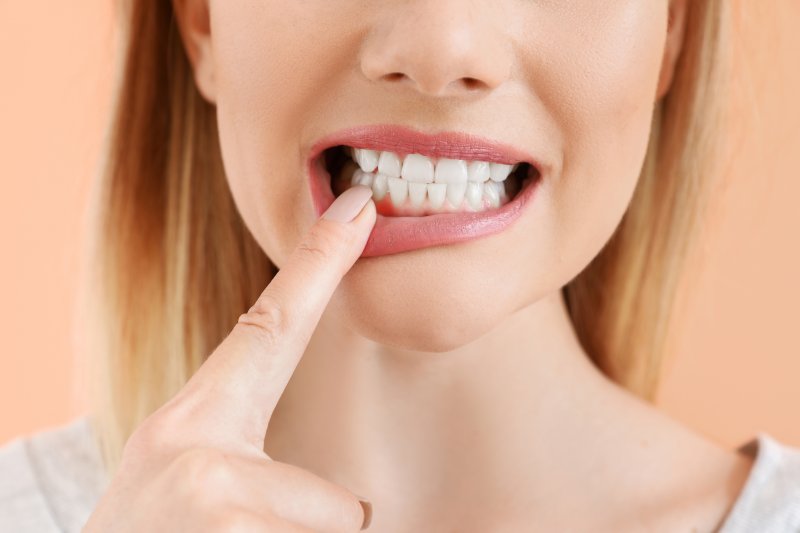What’s the Difference Between Gingivitis and Periodontitis?
September 10, 2021

You don’t have to be a dental professional to know that gingivitis and periodontitis are two unpleasant words you don’t want to come out of your dentist’s mouth at your checkup. Most people know that they indicate a serious problem with your gums, but do you know what each term actually means? Although they’re both stages of gum disease, there are a few notable differences between the two. Read on as your dentist in Chaska explains how gingivitis and periodontitis differ.
What Is Gingivitis?
Gingivitis is a chronic state of gum inflammation. It develops when plaque accumulates in the small areas between teeth, causing gums to become inflamed, irritated, and easily bleed while brushing or flossing. Even though the gums are irritated, the teeth are still firmly anchored in place, and no irreversible bone damage has occurred yet. If left untreated, gingivitis can advance into a more severe stage of periodontal disease, like periodontitis.
Causes
Several factors can increase your risk of gingivitis, including:
- Smoking. Not only is tobacco one of the primary risk factors of gum disease, but it can also lower your chances of effective treatment.
- Poor oral hygiene. You must brush and floss your teeth as recommended to prevent dental problems like gingivitis.
- Hormonal changes. Hormone changes that occur during puberty, pregnancy, or menopause can increase your risk of sensitivity and inflammation in your gums.
- Poor diet. An unhealthy diet will make your body lack the vitamins and minerals it needs to thrive, making it more difficult to fight off infections like gum disease.
- Chronic disease. Medical conditions like diabetes, HIV, and cancer can increase your chances of developing gum disease.
What Is Periodontitis?
As mentioned earlier, gingivitis can advance into periodontitis if left untreated. It causes the inner layer of gum and bone to pull away from the teeth, forming periodontal pockets with harmful bacteria. As plaque spreads and grows below the gum line, the body’s immune system responds by fighting the bacteria. This stage of gum disease can lead to poor tooth alignment, tooth and bone loss, gum recession, and clear pockets between teeth and gums.
How to Tell the Difference
Here’s how to tell whether you have gingivitis or periodontitis:
- Age – Periodontitis is rare in adolescents, but they can still develop gingivitis.
- Pain – Do you have pain when chewing? It could indicate that gingivitis has progressed to periodontitis.
- Tooth Condition – With gingivitis, your gums might be irritated, red, and swollen, but your teeth will still be firmly in place. But if your tooth or teeth are loose, you likely have periodontitis.
- Breath – When gingivitis advances to periodontitis, you’ll likely have persistent bad breath because of excess bacteria in your mouth.
Now that you know what gingivitis and periodontitis are, you can watch out for symptoms of each stage of gum disease. But with proper dental care, you can ensure your gums remain happy and healthy for as long as possible!
About the Practice
At White Oak Dental, we’re passionate about helping patients restore and enhance their natural smiles to the fullest potential possible. Our team uses the latest technologies, techniques, and materials to provide patients with exceptional dental care beyond what’s anywhere else. If you’re experiencing symptoms of gum disease, let us know, and we can treat it with advanced periodontal therapy. Visit our website or call (952) 448-2868 to schedule an appointment.
No Comments
No comments yet.
RSS feed for comments on this post.
Sorry, the comment form is closed at this time.
